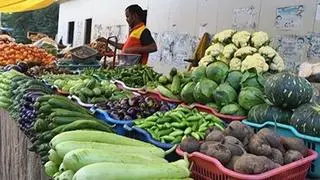With rising domestic and external vulnerabilities, India’s economic situation is unquestionably dire. What is happening to the rupee is only a symptom of deep structural problems in the economy. In a scenario of high CAD, sharply depreciating currency and trimmed growth prospects, we are tempted to compare the present situation with the 1991 crisis. Such comparisons are not only difficult but may also not be very meaningful, given the opacity in measuring the risk itself, the uncertainty over which risk could materialise and when it would trigger a crisis.
That is why an economic crisis is always hard to predict on the basis of risk parameters. Nevertheless, the economic risks at this juncture are high and India is vulnerable, though not as much as in 1991 when default on India’s foreign obligations was imminent.
We typically look at stress indicators such as fiscal deficit, short-term debt, inflation, import cover of foreign exchange reserves and resilience of the financial sector to assess risks in the economy. A comparison of these parameters during 1991 and now throws up mixed results. Some macro numbers such as CAD and short-term external debt look worse today than in 1991, but other indicators such as fiscal deficit, inflation and foreign exchange cover are comparatively better. The fiscal deficit is around 4.8 per cent of GDP today, lower than 7.8 per cent in 1991. The foreign exchange cover too provides a relatively stronger buffer today. But we are worse off today in terms of CAD (as a percentage of GDP) which is two times its level in 1991. Also, the proportion of short-term debt in external debt is higher today. We are also a more open and interconnected economy today, and the external environment we face is more fragile and fraught with greater uncertainties than in 1991.
That said, the economy is more resilient today with a relatively healthy foreign exchange cover. In 1991, we were on the verge of default on external obligations with reserves covering only 15 days of imports. Today, they cover almost 6-7 months of imports. Moreover, unlike a controlled exchange rate in 1991, the rupee is today largely market-driven. That is why external vulnerabilities are getting reflected in sharp swings of currency. Global factors such as risk appetite and liquidity matter much more today than they did in 1991. From an external vulnerability perspective, CAD (as a percentage of GDP) will fall this year from last year’s level of 4.8 per cent but will still remain way above the prudent level of 2.5 per cent.
In such a scenario, it is important to ensure the CAD is adequately financed, which can only be done by taking steps to boost growth prospects, investor confidence, and market sentiment. These problems are not as insurmountable as they seemed in 1991.
Read also: > Are risks to the economy greater than in 1991? Yes
(The author is Chief Economist, CRISIL. The views are personal.)






Comments
Comments have to be in English, and in full sentences. They cannot be abusive or personal. Please abide by our community guidelines for posting your comments.
We have migrated to a new commenting platform. If you are already a registered user of TheHindu Businessline and logged in, you may continue to engage with our articles. If you do not have an account please register and login to post comments. Users can access their older comments by logging into their accounts on Vuukle.